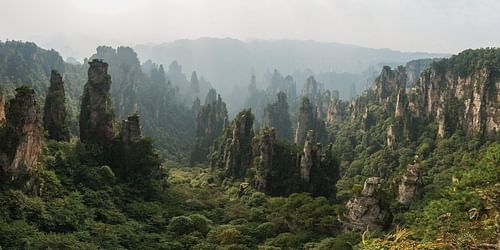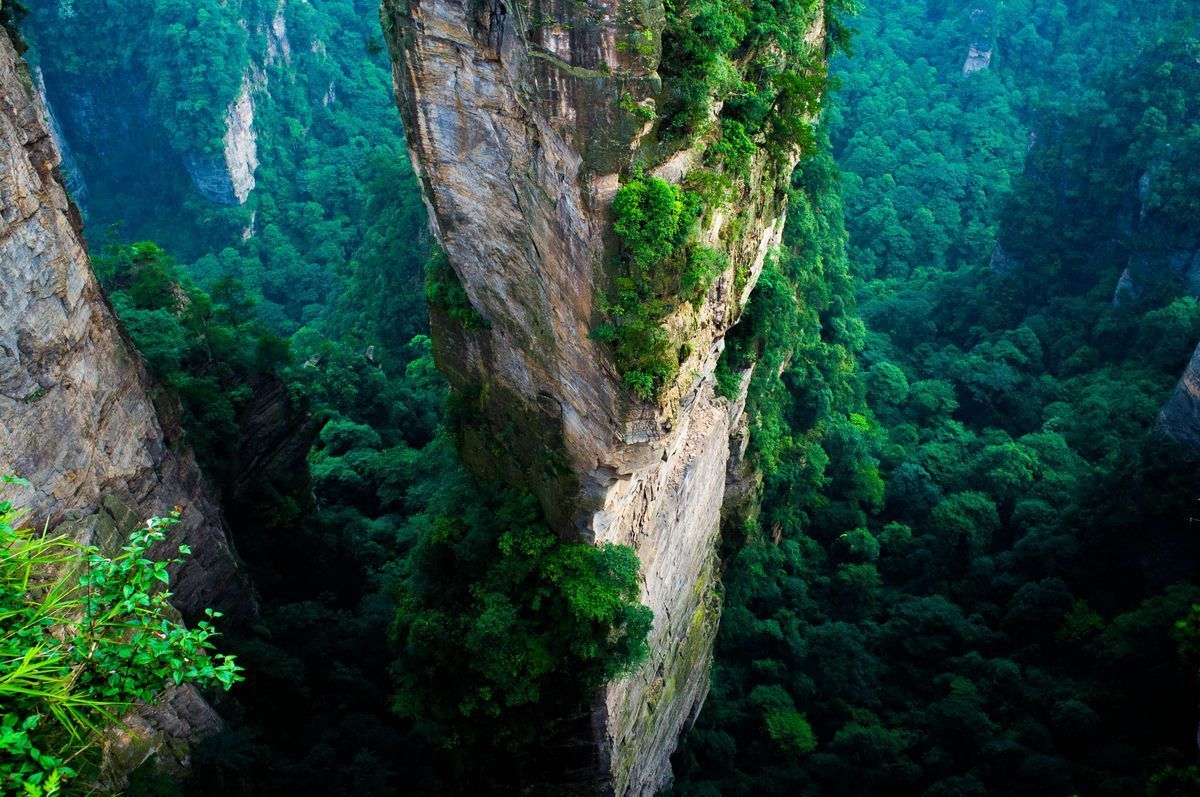
Does the Hallelujah Mountains from Avatar really exist? Explained
A real place in China inspired the magnificent Hallelujah Mountains in James Cameron's 2009 groundbreaking film, Avatar. According to the book titled The Art Of Avatar, designer Steve Messing visited China and got photo references for the floating mountains. Moreover, the film's designer team also confirmed the same to Gizmodo in a 2010 interview.
Despite the mountains shown in the film not being real, they are inspired by the tall peaks of Zhangjiajie National Forest Park, situated in the Hunan province of China. The park was officially established in 1982, and various ethnic groups including the Tujia people, have inhabited the place for thousands of years.
In the film, the Hallelujah Mountains are comprised of beautiful forested stones that appear to defy gravity, floating in the air above Pandora. Some of these mountains are connected through bridges of vegetation and often have breathtaking waterfalls flowing through some sides.
Where are the Hallelujah Mountains from Avatar?

The mountains in Zhangjiajie National Forest Park in China are extremely tall and have unusually thin structures that, when covered in clouds, make their top appear floating above the ground.
In the film Avatar, the Na'vi people of Pandora are displaced from their land, to extract Unobtanium, an extremely rare and expensive mineral found on their land, including the Hallelujah Mountains.
Los Angeles Times reported that the government-run "China Film Group" was worried about the depiction of conflict between the indigenous Na'vi people and humans in Avatar. The group thought that this narrrative would inspire people to draw a connection between the film and the activities of the Chinese government.
However, since the release of Avatar, Zhangjiajie National Park has become more popular, and draws thousands of national and international tourists each month. The tourism department, Atlas Obscura, crafted a popular slogan to attract tourists:
“Pandora is far but Zhangjiajie is near” and “discover the real world of Pandora.”
The mysterial formation behind the iconic Hallelujah Mountains of Avatar in China

There are over 3000 vertical mountains in Zhangjiajie National Forest Park. Some of these peaks are thousands of feet tall, covered in dense green foliage, and look stunning as shown in the film.
According to Geology Science, the unique sandstone formations, including the pillars and deep ravines of the Zhangjiajie Forest have been formed by thousands of years of weathering and erosion. The area was initially covered by ocean, and with time, tectonic movements caused the land to rise above water level. This process created the sandstone pillars that can be seen throughout the park today.
The official website of Zhangjiajie Tour Guide states that the formation of these peaks was likely caused by agents like water erosion, gravity collapse, and weathering, over millions of years.
Scientific sources indicate that water erosion, frost wedging, and plants growing within cracks caused substantial erosion of these mountains and gave them the majestic vertical appearance that inspired the Hallelujah Mountains in Avatar.
Why are the Hallelujah Mountains in Avatar always floating?
The gravity-defying nature of the Hallelujah Mountains is attributed to the massive amount of a mineral called Unobtanium. Being a superconductor, Unobtanium causes the maglev-effect, which makes these peaks float above the ground but keeps them stable.
When superconductors are in the presence of a magnetic field, they can float, and the world of Pandora in Avatar is one giant superconductor, which humans are desperate to mine for economic benefits.
Everything to know about Unobtanium
Unobtanium is a word scientists have been using since the 1950s, and is referred to as a material that cannot be procured. In the alien planet Pandora, Unobtanium is the ultimate superconductor that can be obtained only after displacing the native Na'vi people.
In the fictional world of Avatar, Unobtanium can conduct electricity without resistance at room temperature, and each kilo costs around $20 million. The presence of these minerals revolutionized the technology on Earth, and the future human economy depends on it.
In Avatar, Unobtanium serves as the driving force for the conflict between humans and Na'vi people leading to the epic First Pandorean War.